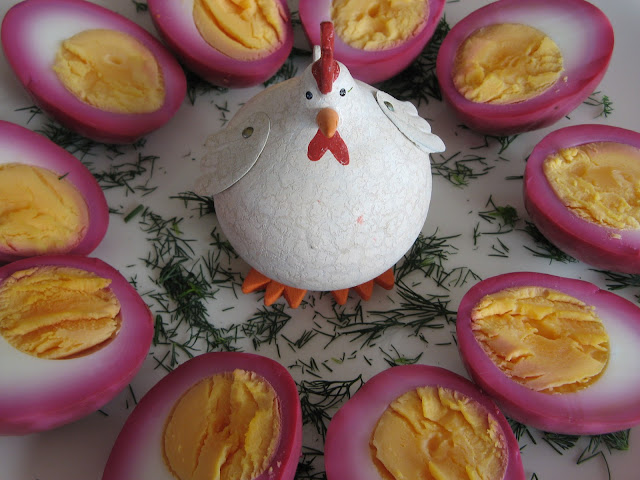Photo by Juta Kübarsepp for the March 2013 issue of Kodu ja Aed magazine.
Kedgeree is an Anglo-Indian dish that was a popular breakfast item during the Victorian era. It's a rice dish with smoked fish and soft boiled eggs, seasoned with curry and herbs. I had seen various kedgeree recipes during my years in Edinburgh, yet I hadn't had a chance to try, yet alone make it myself. The opportunity finally knocked at my door during Easter, as I had all those colourful Easter eggs needing to be used up.
I cannot really tell you the origin of this recipe any more. I wasn't sure I will be able to find smoked haddock here, so I decided to go with salmon - the post popular and common smoked fish in Estonia. I searched the web and my bookshelf and printed out several recipes for a smoked salmon kedgeree. Eventually, I did find smoked haddock after all, and after some further inspiration from Jamie's Dinners: The Essential Family Cookbook
I enjoyed it, and I hope you'll do as well. It was a light and unusual brunch dish, and the pretty yellow colour made it especially suitable for a sunny spring day.. One day I will give the smoked salmon kedgeree a try, however, too..
My kedgeree
(Suitsutursakedgeree)
Serves 6-8

250 grams basmati rice
400 ml water or vegetable stock
200 grams hot smoked haddock, flaked (cleaned weight)
25 grams butter
1 small onion, finely chopped
1 garlic clove, finely chopped
1 Tbsp mild Indian curry powder
half a lemon
salt and black pepper
fresh coriander or parsley, chopped
2-3 boiled eggs, peeled and halved lengthwise
Rinse the rice in a running cold water, drain.
Melt the butter in a pan over a medium heat. Add the onion, garlic and curry powder and fry gently for about 5 minutes.
Add the rice and the boiling water/stock (all at once). Simmer gently, covered, for 10 minutes, until rice is 'al dente'.
Add the flaked fish and lemon juice, heat through.
Season, sprinkle with chopped herbs.
Garnish with thinly sliced lemon and top with halved boiled eggs.
OTHER BLOGGERS BLOGGING ABOUT KEDGEREE:
Sam and her Kedgeree (including a link to some further background information on this dish)
Mae and her beautiful Smoked Haddock Kedgeree
Freya & Paul and their Kedgeree a la Lindsay Bareham
Sher and her Salmon Kedgeree a la Nigella Lawson
Liz and her Smoked almon Kedgeree with Shrimps





























